LUMOS made their debut with the AURO Projector that was a compelling 1080p projector for its price. But if you want to bring it to another place, it could be a hassle as it is rather bulky and heavy. If you’re looking for something to bring around, the new LUMOS ATOM Projector is a portable 1080p projector that retails for S$999.
Tech specs
| Dimensions | 10 x 10 x 16 cm |
| Weight | 0.8kg |
| Display Technology | Premium DLP |
| Brightness | 6000 Lumens |
| Resolution | 1920 x 1080p |
| Control | Touch Pad Control, Motion-Control Remote |
| Operating System | Android 7.1 |
| Inbuilt Apps | YouTube, Netflix, Google Play Store, AirPlay, EShare, WIFI Display |
| Wi-Fi | Yes |
| Bluetooth | 5.0 |
| Projected Screen Size | 50-300 Inch |
| Short Throw Ratio | 1.3:1 |
| Battery Life | 2 Hours Playtime (2-3 Hours to charge) |
| Keystone Correction | Horizontal & Vertical±15° In-built auto vertical adjustment |
| Interfaces | HDMI x 1 / USB x 1 Audio Out |
| Supply Power | DC 15V, 3A |
| Consumption | 35W |
| Warranty | 1 Year |
Unboxing
In the box, you will receive the following items:
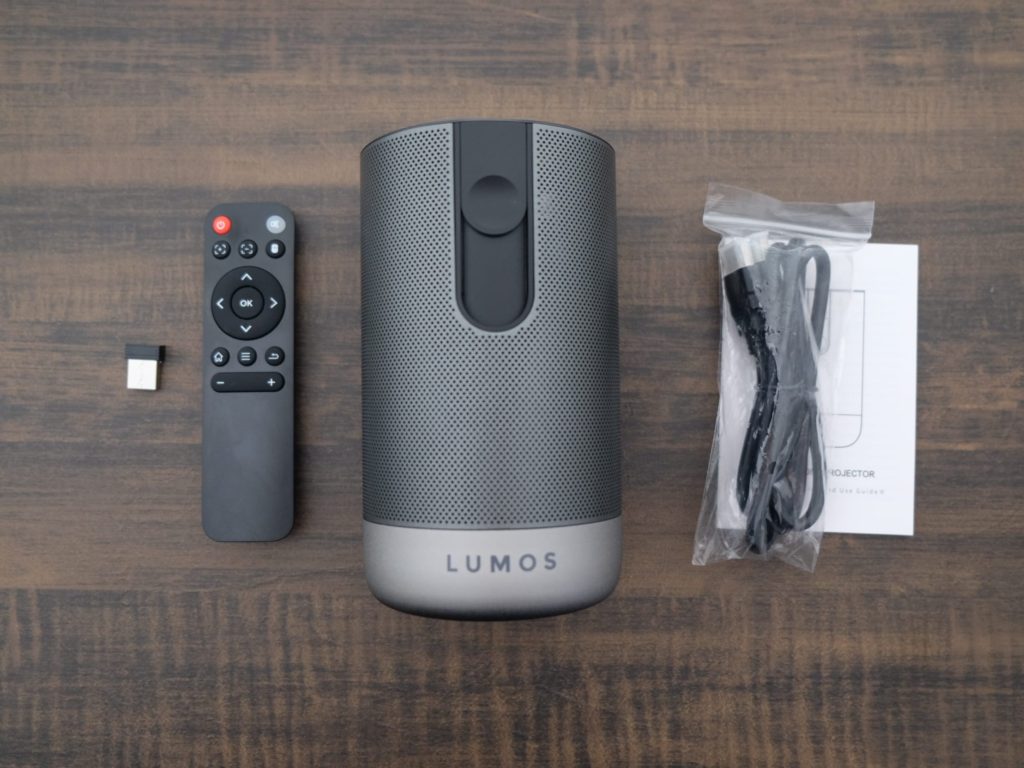
- LUMOS ATOM Projector
- Remote control with USB receiver
- HDMI Cable
- Power Cable (not shown)
- User manual
Design and build quality
The LUMOS ATOM Projector has a sleek and modern design that resembles the Sonos Move. The dark grey aluminium casing with a matte finish and the perforated panels hiding the speakers provide a modern look to the projector.
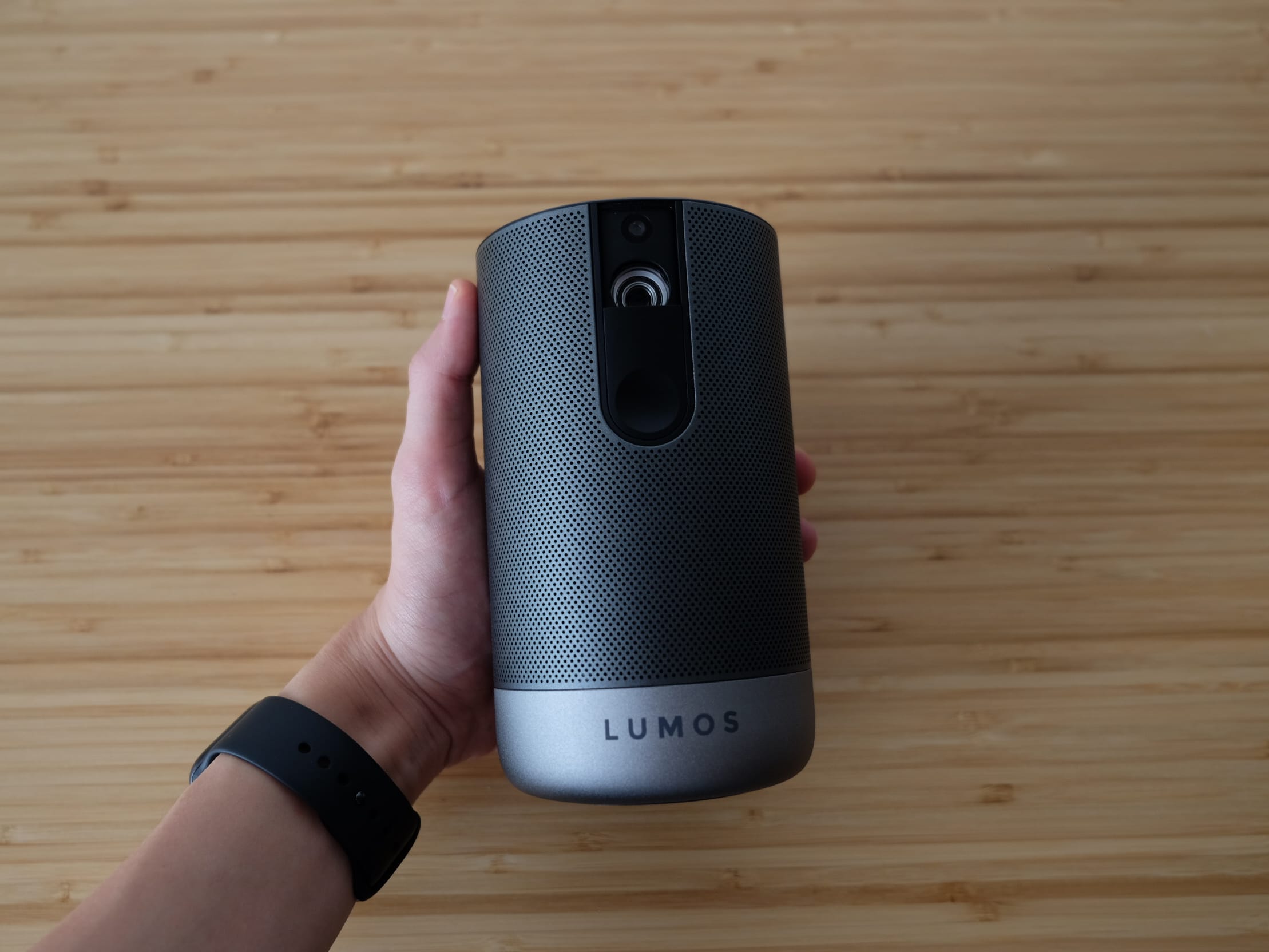
Build quality of the LUMOS ATOM Projector is largely good as well. The aluminium used feels nice to the touch and the overall build does feel sturdy. The bottom rubber ring base does keep the projector steady on the surface as well. The only component that makes the LUMOS ATOM Projector feel a little cheap would be the lens cover as it feels like cheap plastic. Though it looks like it blocks the lens, it actually does not.
Another thing to point out is the 1/4-inch tripod screw mount added on the base of the projector. It is important that LUMOS added it since there are no adjustable leg like on the AURO to adjust the tilt. It would have been nice if LUMOS could throw in a small tripod stand, but I’d recommend getting a small tripod stand along with the LUMOS ATOM.
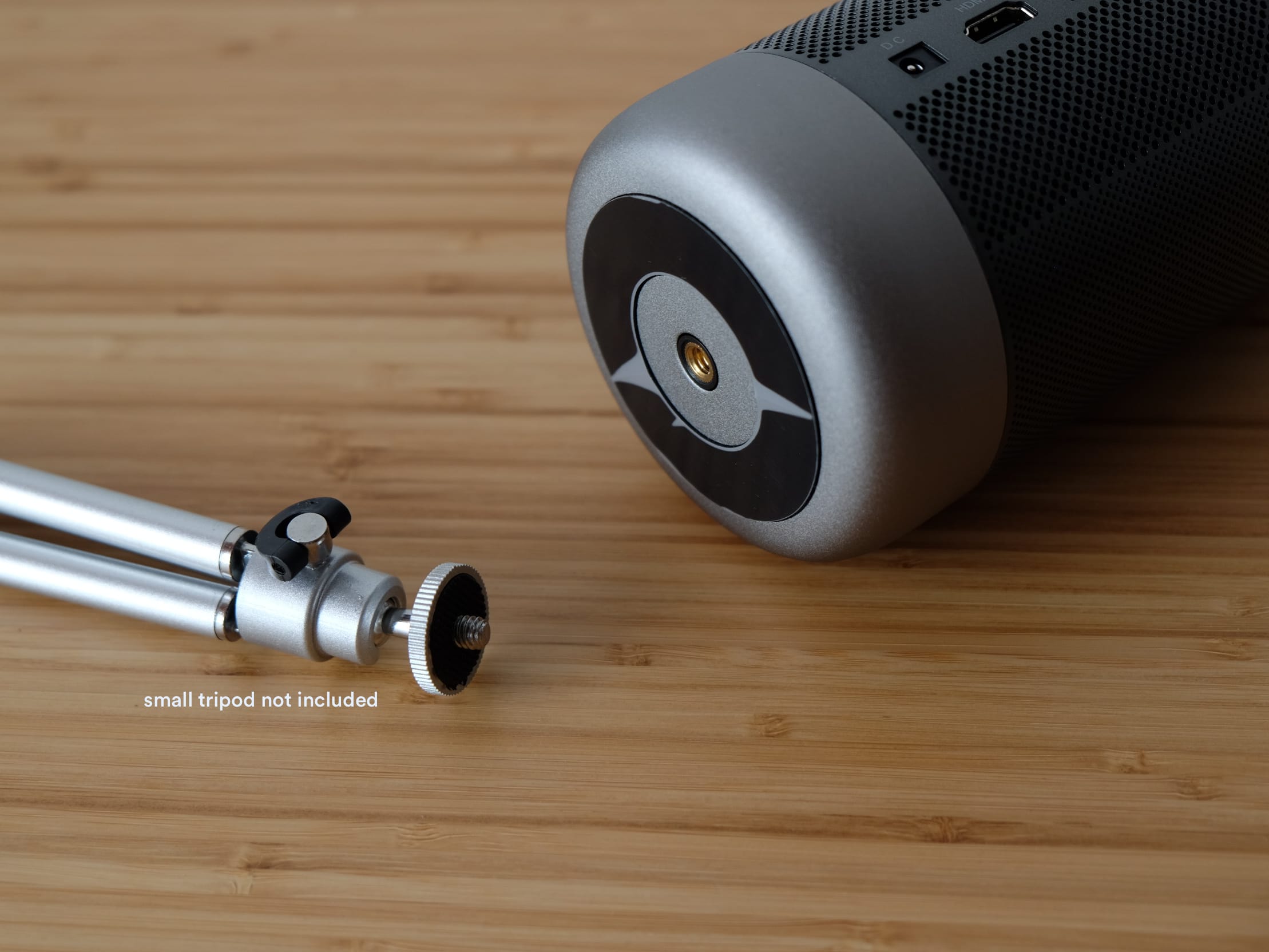
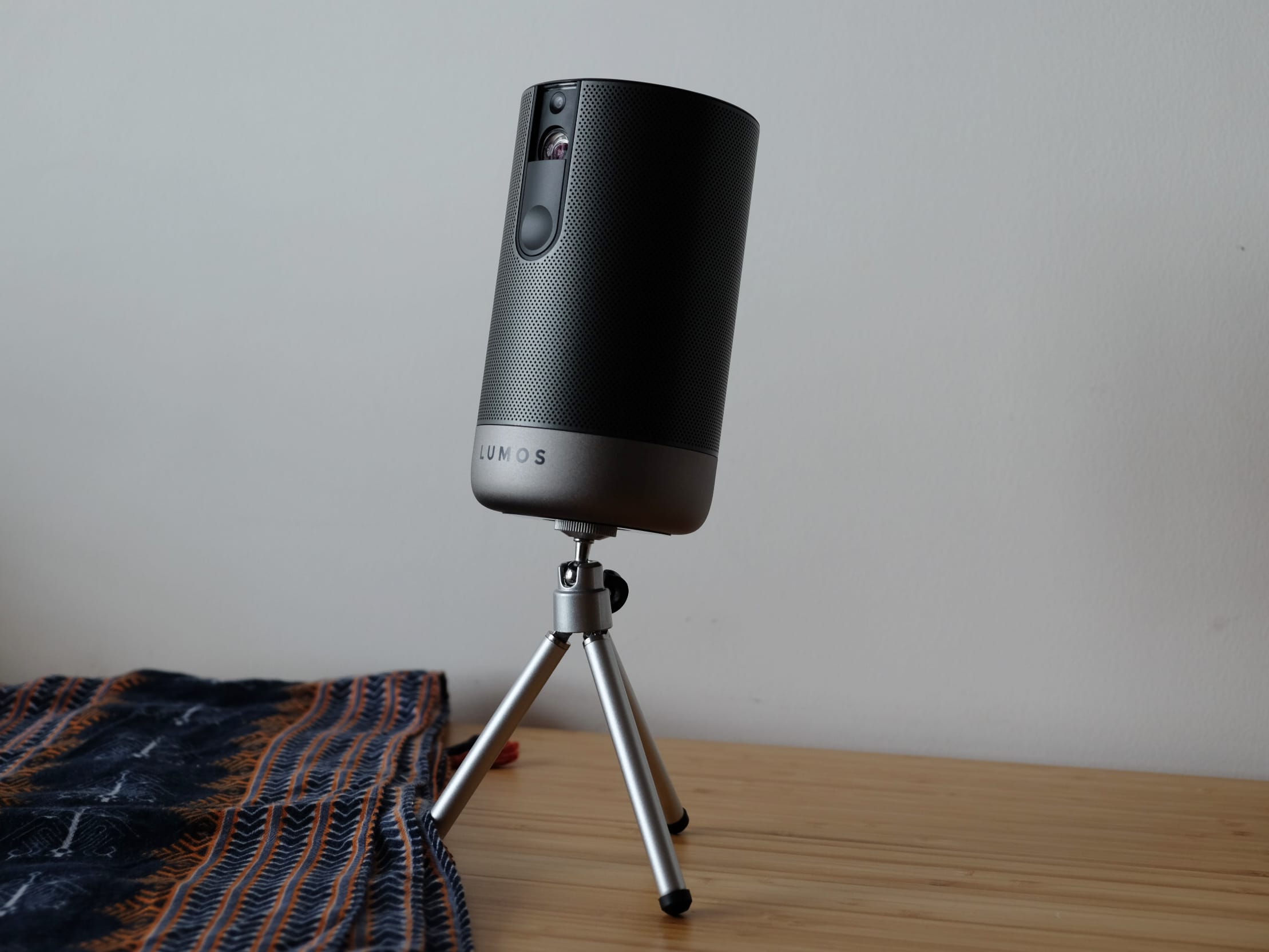
Input sources and ports
There are only two alternative aways of inputing media on the LUMOS ATOM if you’re not using the Smart Android OS. They are the (1) trusty HDMI and (2) phone mirroring casting. Apart from those ports, you have two USB-A ports and a 3.5mm audio jack as well. One USB-A offers power, while the other does not. Ideally you’d want to use the non-charging USB-A port for connecting peripherals such as a keyboard, while the other could be useful for charging your phone or ChromeCast.
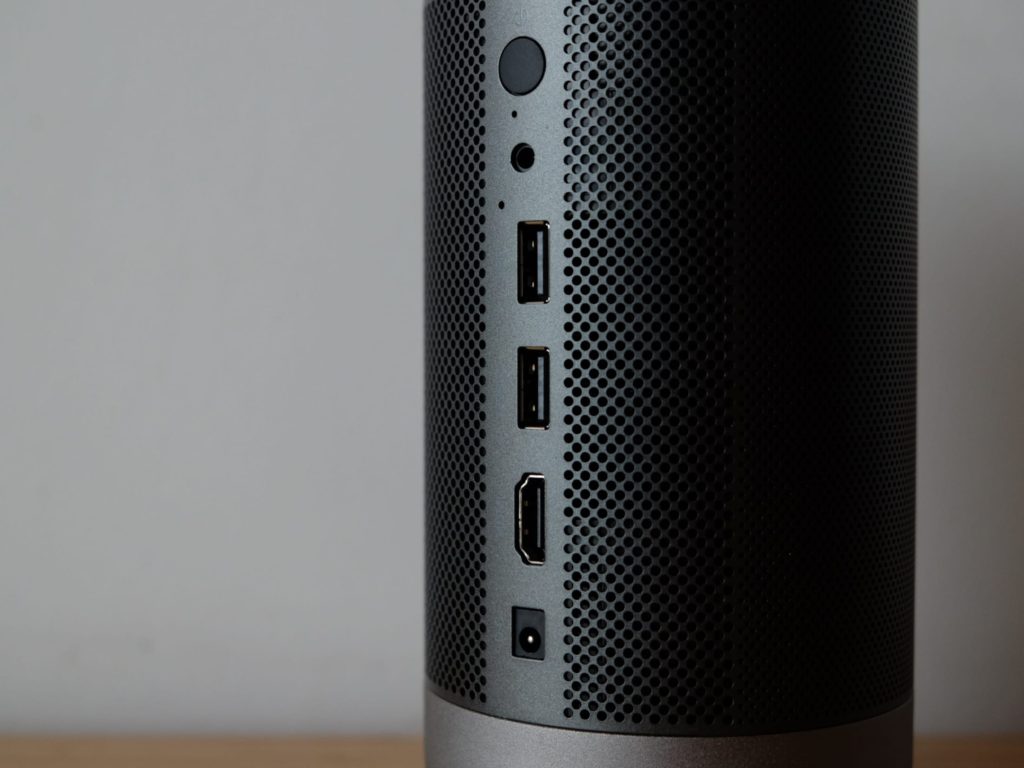
HDMI
The single HDMI port output media at up to 1080p at 60Hz refresh rate.
Phone Mirroring
You can mirror your phone via the pre-installed apps on the LUMOS ATOM Projector. For Apple users, the mirroring process is quite straightforward. Simply launch the AirPlay app and you should be able to mirror your screen. But do note that this is not the official Apple AirPlay. The AirPlay app feature is best used for sharing content of your phone instead of casting media content as does take a long while for it to load and can sometimes fail. I’d recommend sticking to apps for streaming media.
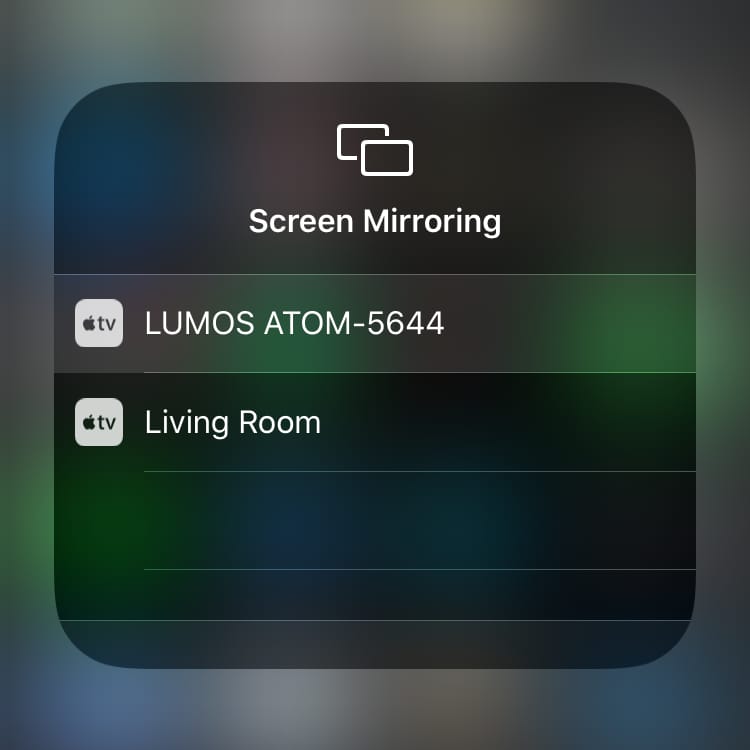
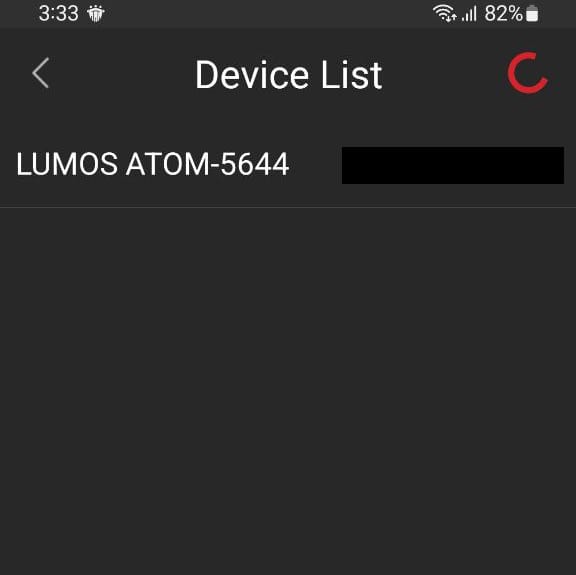
For Android users, mirroring your screen requires you to download the Eshare app. Once both your phone and LUMOS ATOM is connected to the same Wi-Fi network, the Eshare app will automatically detect it. You can mirror your screen, and cast contents from your phones file manager, or even mirror the projector contents to your phone’s display
Projection quality and features
LUMOS ATOM offers native 1080p resolution with up to 6000 lumens of brightness. With that, the projection quality is very good. As long as your room is not too bright, images and text will appear sharp and clear, even at the corners. Colours are also nice and punchy. As the distance between the projection and wall/screen gets bigger, the size of the projection starts to get larger as well. I found that the best balance between size and sharpness is around 2 metres. Else, images or text at the corners will start to look soft.
Auto keystone correction
One great feature the LUMOS ATOM has over the AURO is its auto keystone correction. If you’re placing the projector at a tilt (if you are using it on a tripod), LUMOS ATOM is able to auto correct the shape of the projection by displaying a matrix for it to self-calibrate. If you’re still not satisfied with the auto output, you can further correct the angle via the “Initial angle correction” button in the settings or manually adjust the keystone.
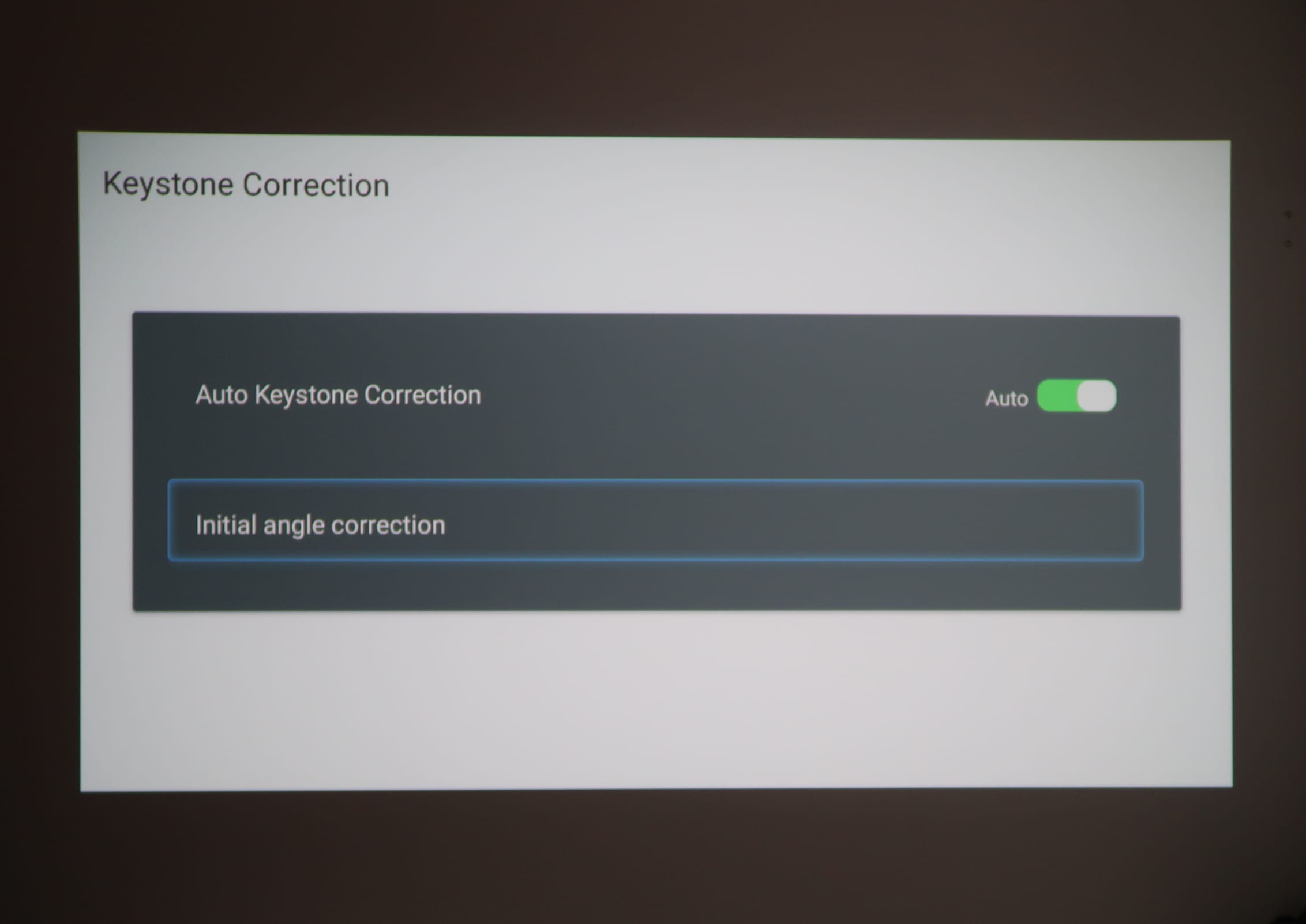
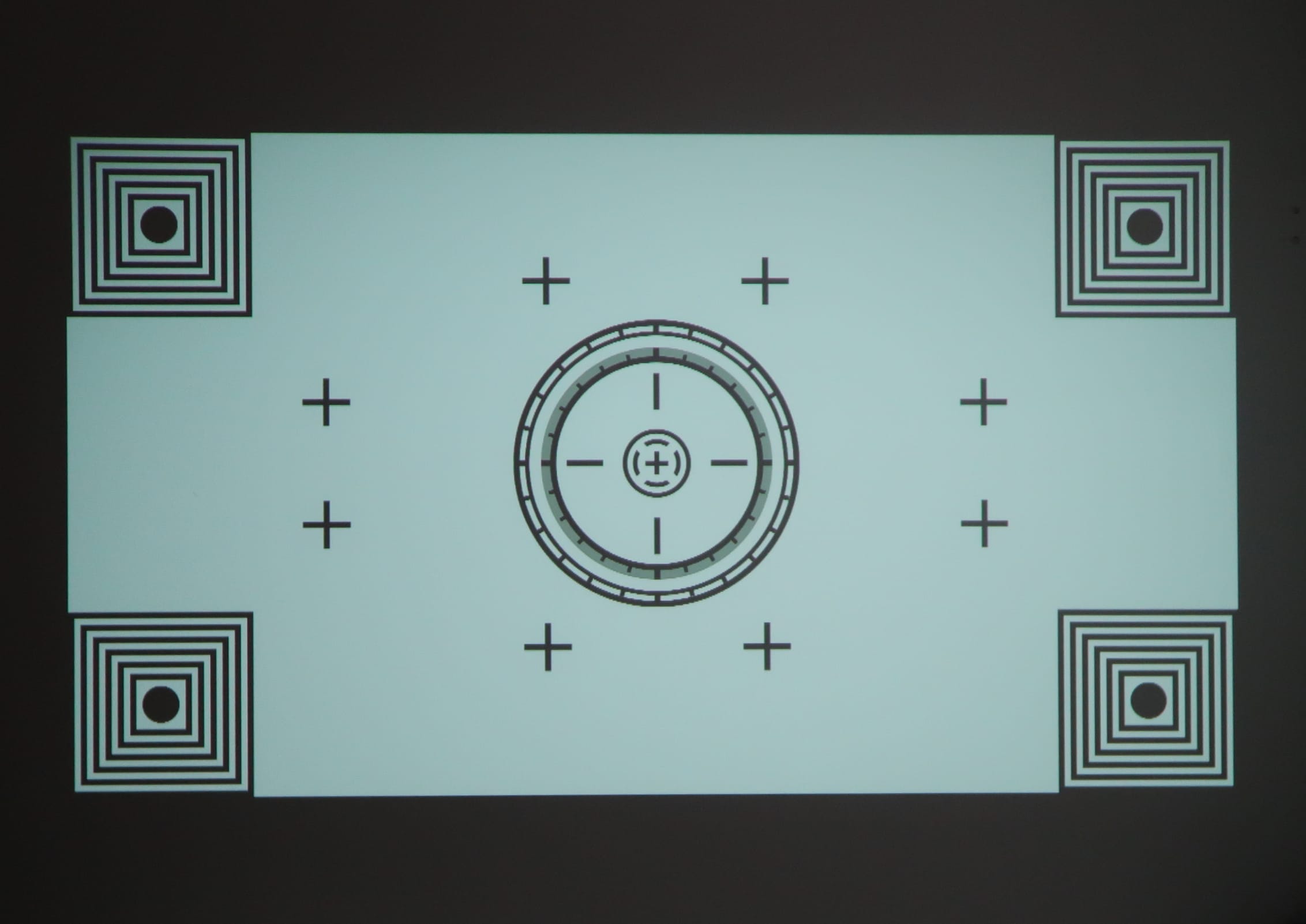
I really like this auto keystone correction as it makes the setup very fast without needing to spend too much time in the settings to ensure that you have a nice rectangle as your projection. However, I do find that it is still best to place your projector square or directly in front your screen/wall. Too much off-angle will lead to blurry corners, or the auto correction not working at all.
Auto focus
I also like how LUMOS ATOM automatically focuses the image when it is booted up, or if it senses a different distance from before. It largely focuses well, but if you wish to manually fine tune it, you can do easily via the two buttons on the remote control (the + and – buttons located at the top). The same calibration image shown above is displayed so that you can use the boxes and circles to determine what is sharp.
Size adjustments
The size of the projection can also be adjusted via the software of the Android OS. You can choose the amount of zoom, and even configure the aspect ratio to 4:3 if you ever need to, as shown below:
Another feature LUMOS advertised is the ability to throw the projection on to the ceiling by laying LUMOS ATOM flat on the ground. Personally, I’m not a fan of watching content on the ceiling, but if this has been your secret wish then you know what you need to get.
Speakers and fan noise
Audio from the LUMOS ATOM is pretty decent. For its small size I wasn’t expecting too much anyway, but it is loud enough for casual watching. Comparing it to the larger AURO, the AURO sounds better with fuller low end and can get much louder given its larger size. However, the fan noise on the LUMOS ATOM is much quieter than on the AURO which is much appreciated.
You can also use the LUMOS ATOM as a bluetooth speaker if you want to. Since the LUMOS ATOM is designed to be a portable projector, having this functionality does make the LUMOS ATOM a more versatile product.
User experience
LUMOS ATOM has a straightforward Android based operating system. And it looks way cleaner that the UI on the AURO. You have YouTube and Netflix pre-installed as the main apps on the featured tiles. It is easy and intuitive to navigate the UI elements.
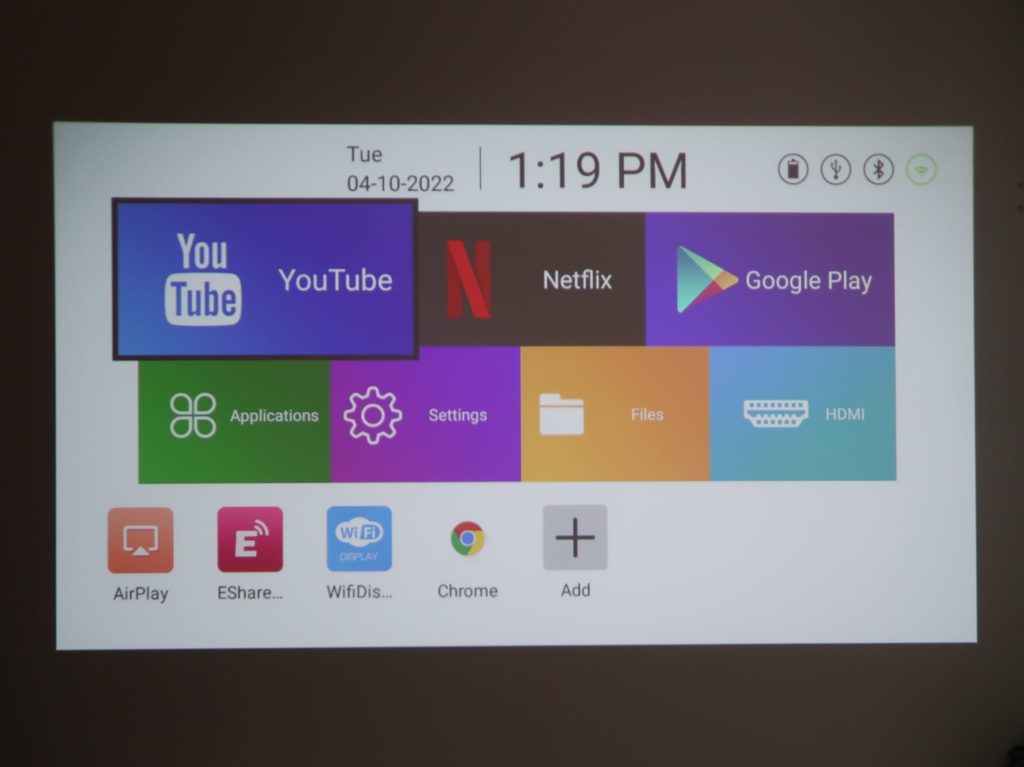
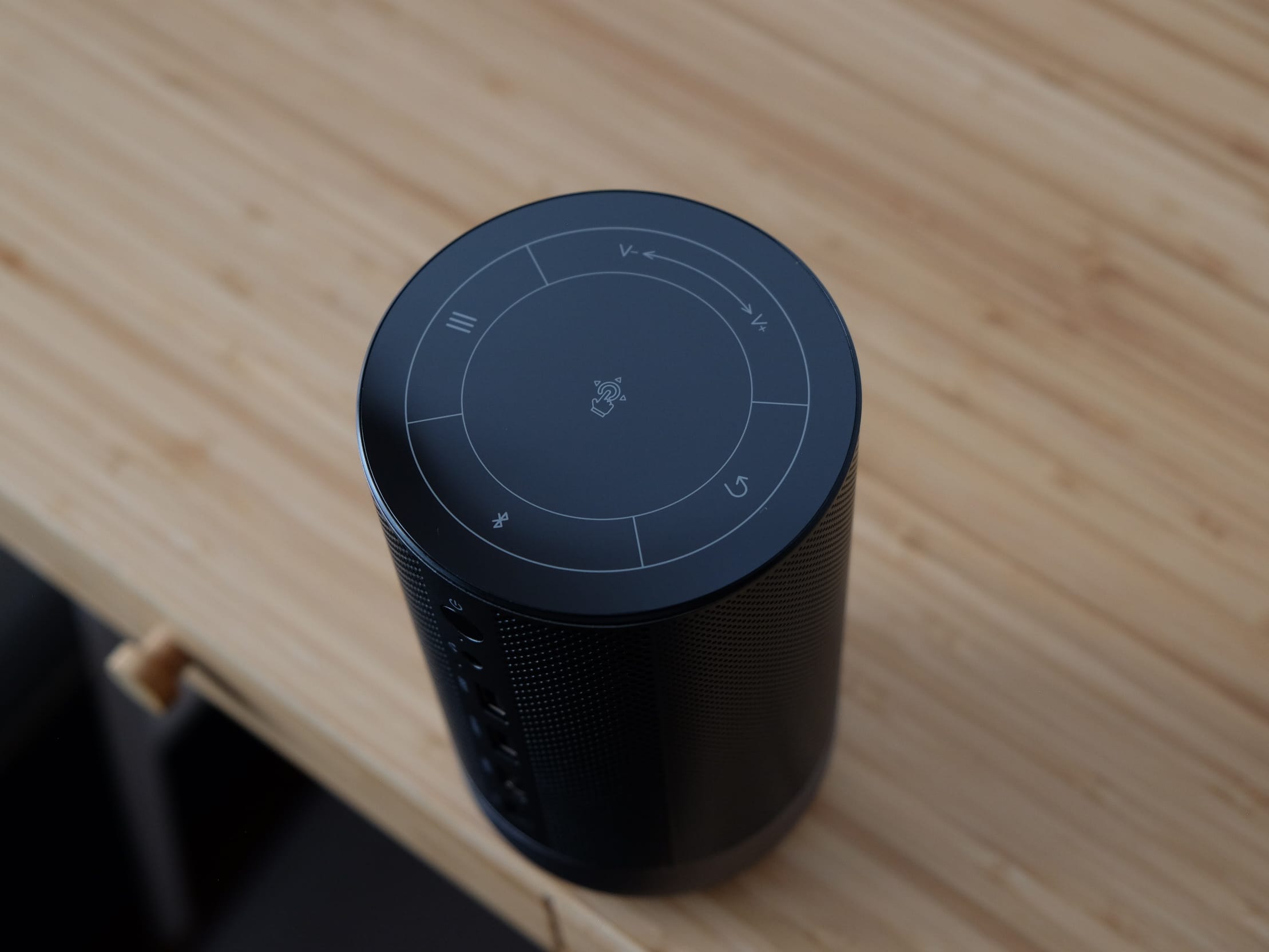
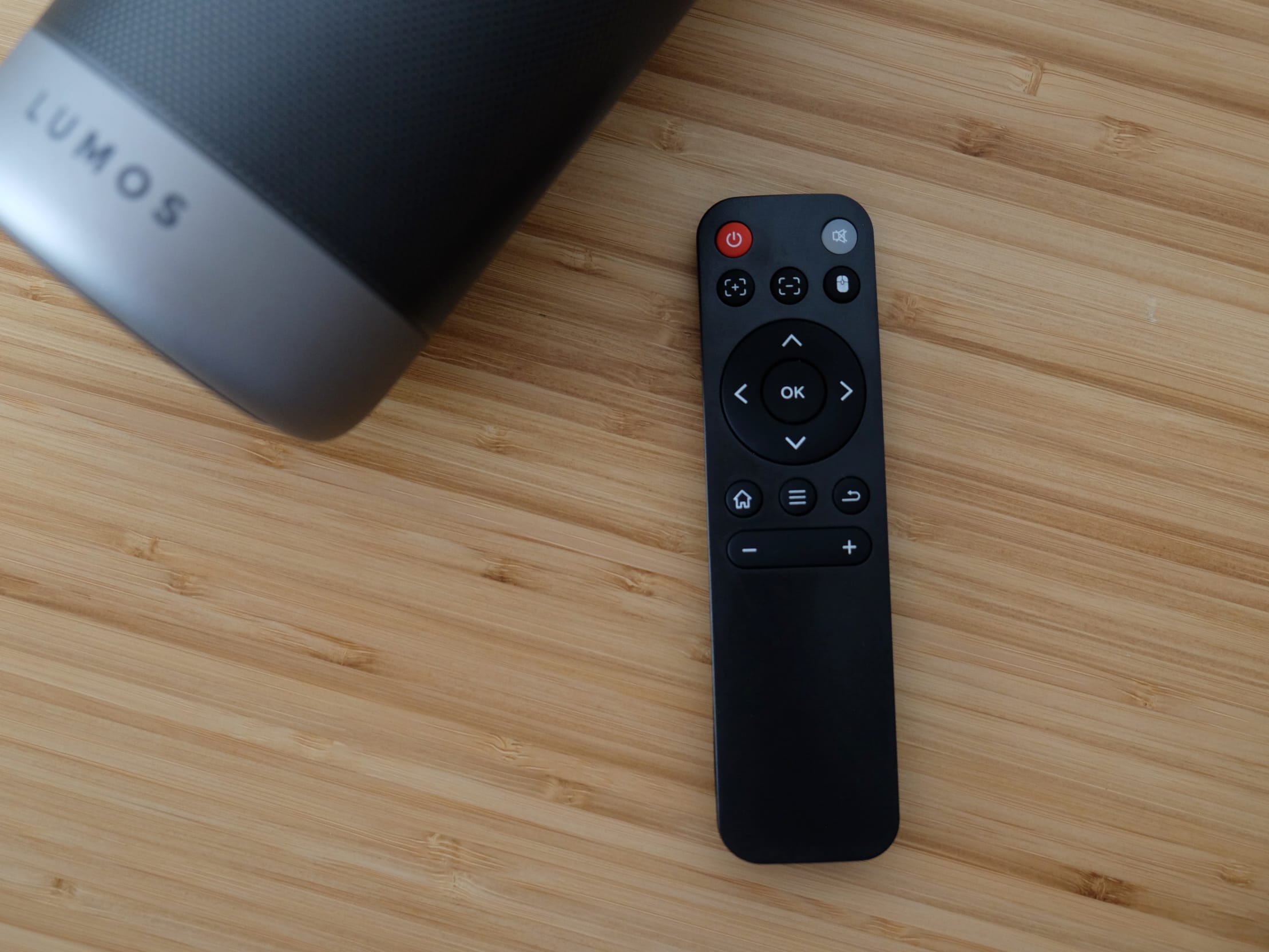
You can choose to use the touch controls on the projector itself, or use the provided remote control. Personally, I prefer using the remote control. While using the remote control, you can switch between two modes of navigating – (1) up/down/left/right button navigation or (2) mouse pointer. The mouse pointer style reminds of the Samsung TV magic remote where the pointer follows the where you point the remote. The mode is useful when you have to do typing or you wish to quickly select an app.
Since LUMOS ATOM is a smart projector, you are able to download other streaming apps from the Play Store. However, this is with a caveat. Since the Android OS on LUMOS ATOM is on 7.1.2, you may not find all the apps you want in the Play Store. You won’t be able to download Disney+, but thankfully it seems like HBO Go, MeWatch, and StarHub+ are available. If you are mainly only using YouTube or Netflix then this shouldn’t be an issue. However, there is technically a workaround by installing apps not available from the Play Store via APKs with a USB. In the future, it would be nice to see LUMOS ATOM or other new projectors heading towards the path of Android TV to offer longevity as a smart product.
LUMOS ATOM has a built-in memory of about 20GB so you can use that space to download Netflix videos offline, or transfer media files for offline viewing.
Battery life
LUMOS ATOM has a 2 hour play time which is just enough for some movies. Personally I think the portability aspect is best used for watching shorter shows or use for sharing your screen. It would be nice if LUMOS ATOM charges via USB-C so it could be powered by a power bank. I still see myself using the projector plugged in most of the time anyway.
Conclusion
LUMOS ATOM is a capable portable projector due to its built-in functionalities of auto focus and keystone correction to allow for a quick setup wherever you take it to. The size of the LUMOS ATOM also makes it very easy to bring it around. The availability of a touch control means you can just bring the LUMOS ATOM and leave the remote control behind. At S$999, it is a steep jump from the AURO, but if you prioritise portability then this is the premium to pay. It would have been nice to see LUMOS adding a mini tripod and upgrading the OS to one that is of Android TV to better future proof the product.
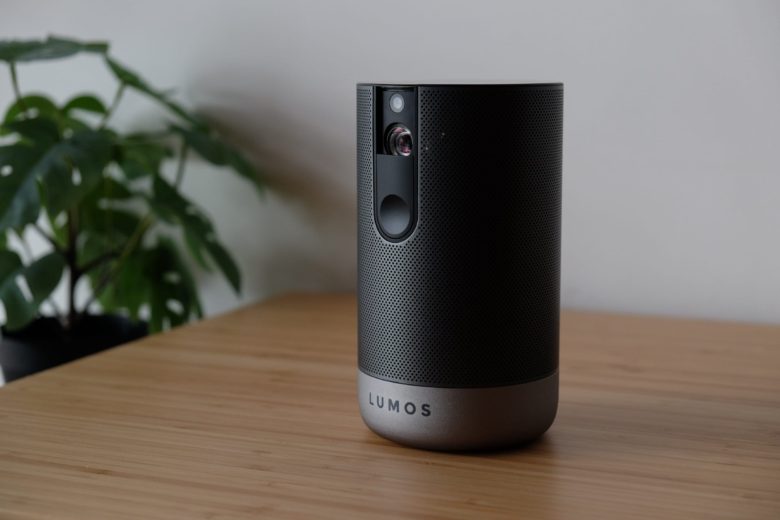

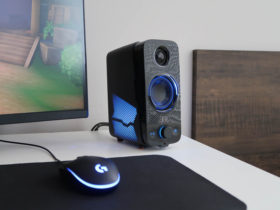

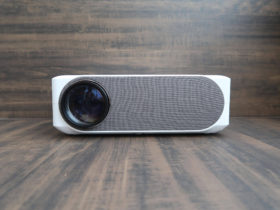
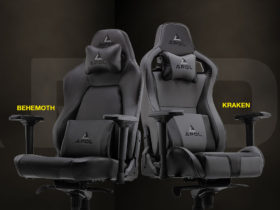
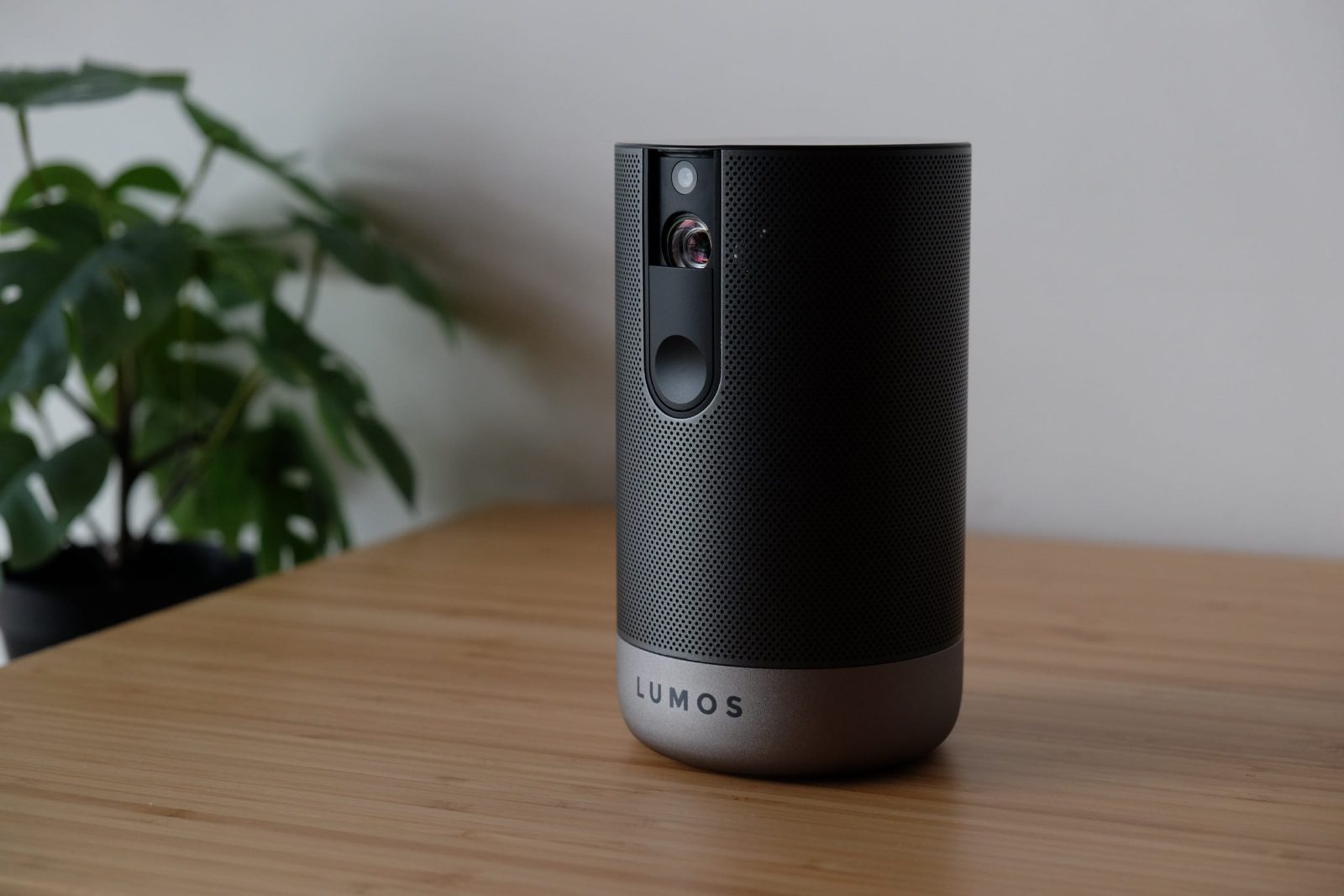
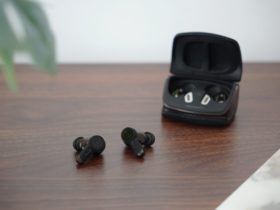




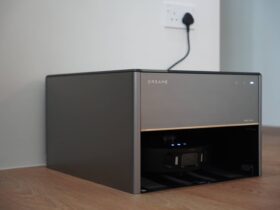
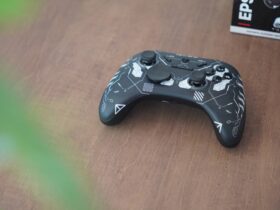
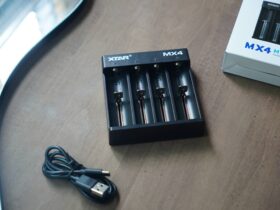
Leave a Reply